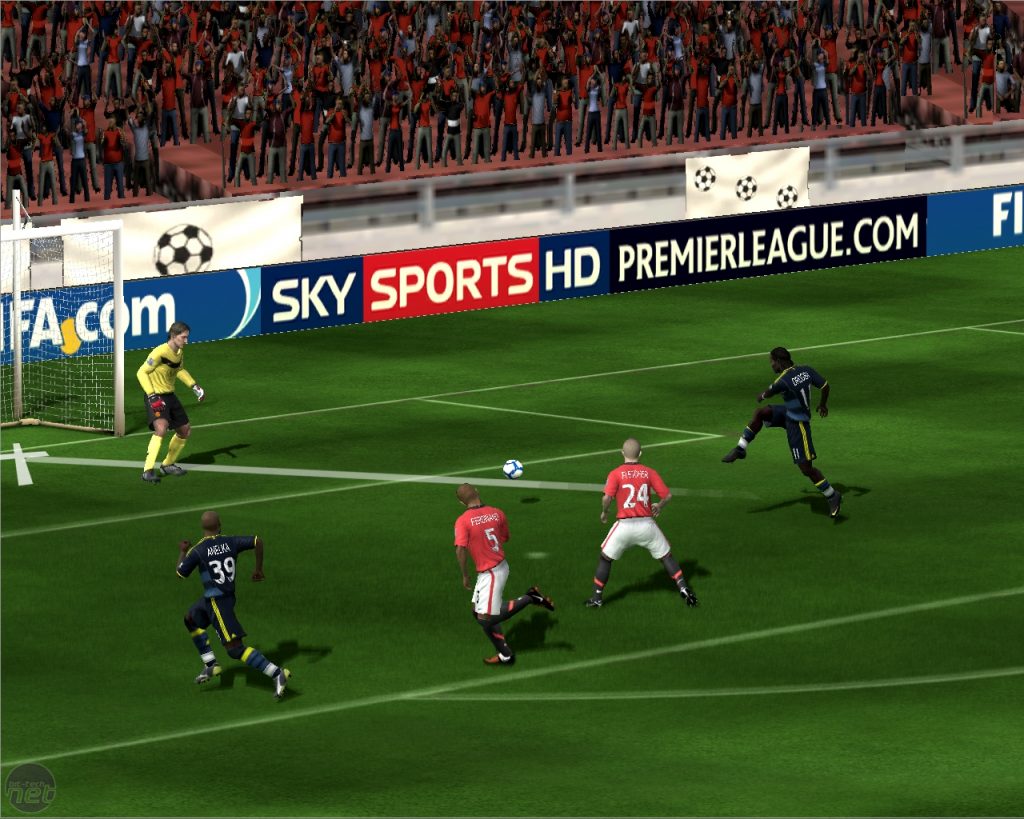Table of Contents Show
In-game advertising (or IGA) is a type of advertising that is integrated into an online or video game. This type of advertising has become increasingly popular in recent years due to the rise of the gaming industry, with more and more people playing games on their phones and computers. IGA allows companies to reach a larger audience and target a specific demographic, as well as providing an interesting and engaging way for players to interact with brands.
Types of in-game advertising
There are a few different types of in-game advertising, each of which comes with its own advantages and drawbacks. The most popular type of IGA is static advertising, which involves the placement of ads within a game. This type of ad can have a number of different forms, from billboards to banners to pop-up ads. Static advertising is a great way to reach a wide audience but can be intrusive for some players, so it’s important to ensure the ads don’t detract from the gaming experience.

Dynamic advertising is another popular form of IGA, involving the placement of ads in the game that can be changed or updated over time. This type of advertising allows companies to tailor their ads to a specific demographic and to update their campaigns as needed. However, dynamic advertising requires more technical skill and resources to create and manage, so it may not be suitable for all companies.
Finally, there is contextual advertising, which involves the placement of ads within the context of the game. This type of advertising can be more subtle than static or dynamic ads, as it requires the ad to fit within the game’s narrative or setting. Contextual advertising can be a great way to reach a more engaged audience, as it allows companies to create ads that will be seen by players who are already invested in the game.
Benefits of in-game advertising
In-game advertising offers a number of benefits for companies, both in terms of reaching a larger audience and in terms of the potential for engagement. As the gaming industry continues to grow, so too does the potential for IGA to reach a larger audience. Additionally, IGA allows companies to target a specific demographic, as most gamers are within a certain age range and demographic.
IGA also offers a more engaging way for players to interact with brands, as opposed to traditional forms of advertising. This can lead to increased brand recognition and loyalty, as players are more likely to remember and engage with brands they see in-game. Additionally, IGA can be used to create unique experiences for players, such as branded levels or locations. This can be a great way for companies to build relationships with their audience and create a more memorable gaming experience.
Reasons for the rise of in-game advertising
The popularity of in-game advertising can be attributed to a few different factors. Firstly, the rise of the gaming industry has led to more people playing games on their phones and computers, creating a larger audience for advertisers to target. Additionally, the rise of social media has made it easier for companies to reach a larger audience and create more engaging ads.

Furthermore, the increasing sophistication of games has made it easier for companies to incorporate ads into the game without detracting from the gaming experience. This has allowed companies to create more immersive and interactive ads, allowing them to reach a larger and more engaged audience. Finally, the cost of creating and managing IGA campaigns has decreased significantly in recent years, making it more accessible to a wider range of companies.
How does in-game advertising work?
In-game advertising works by placing ads within a game, either in the form of static or dynamic ads. Static ads are usually placed within the game’s environment or on billboards, while dynamic ads can be changed or updated as needed. Contextual ads are also becoming increasingly popular, as they allow companies to create ads that fit within the game’s narrative or setting.
Once the ads have been placed in the game, companies can track the performance of their campaigns through analytics and metrics. This allows them to see how many people have seen the ads and how many people have interacted with them, as well as other information such as demographics and location. This data can then be used to refine and improve future campaigns, as well as to measure the success of the current campaign.
Challenges of in-game advertising
Despite the numerous benefits of IGA, there are also some challenges that companies must be aware of when embarking on an IGA campaign. Firstly, it can be difficult to create ads that fit within the game’s narrative or setting without detracting from the gaming experience. This can be especially difficult for games with a more mature or serious tone, as ads that are too intrusive can be off-putting for players.
Additionally, tracking the performance of IGA campaigns can be difficult, as there are a number of factors that can affect the success of a campaign. From the placement of the ad to the type of ad to the target audience, there are a number of variables that can affect the success of an IGA campaign. As such, companies must be careful to track their campaigns and adjust their strategy accordingly.
Potential pitfalls of in-game advertising
When creating an in-game advertising campaign, companies must be aware of the potential pitfalls that can arise. Firstly, it is important to ensure that the ads are not intrusive or disruptive to the gaming experience, as this can have a negative impact on the performance of the campaign. Additionally, it is important to ensure that the ads are relevant to the game and its audience, as irrelevant ads can be off-putting for players.
Furthermore, companies must be careful to ensure that their campaigns are compliant with any applicable regulations or laws, as failure to do so can lead to legal repercussions. Finally, it is important to ensure that the ads are not misleading or deceptive, as this can lead to negative perceptions of the brand and potential repercussions from regulators.
Finding the right in-game advertising partner
When embarking on an IGA campaign, it is important to find the right partner to help create and manage the campaign. There are a number of factors to consider when choosing a partner, such as their experience in the gaming industry, their understanding of the target audience, and their creative capabilities. Additionally, it is important to ensure that the partner understands the regulations and laws surrounding IGA, as well as the potential pitfalls of the campaign.
It is also important to ensure that the partner is able to track the performance of the campaign, as this will be invaluable in refining and improving future campaigns. Finally, it is important to ensure that the partner is able to provide feedback and insights into the performance of the campaign, as this can help companies to adjust their strategy and ensure the success of their IGA campaigns.
In-game advertising case studies
In-game advertising has been used by a number of different companies over the years, with varying levels of success. One of the most successful cases of IGA was the partnership between Nike and EA Sports, which resulted in a highly successful campaign for the launch of Nike’s Air Max shoes. The campaign featured a series of in-game ads that were displayed in the games during the launch period, resulting in increased brand recognition and sales.
Another successful case of IGA was the partnership between Coca-Cola and the game Fortnite. The campaign featured a series of ads placed within the game, as well as the creation of a Coca-Cola branded island. This resulted in increased brand recognition and engagement, as well as an increase in sales for Coca-Cola.

Finally, the partnership between KFC and Pokemon Go is another example of successful IGA. The campaign featured a series of in-game ads as well as the creation of a KFC-themed area in the game. This resulted in increased brand recognition and loyalty, as well as an increase in sales for KFC.
Conclusion
In-game advertising has become increasingly popular in recent years, and for good reason. IGA offers a number of benefits for companies, from the potential to reach a larger audience to the potential for increased engagement. Additionally, IGA allows companies to create unique and engaging experiences for players, which can lead to increased brand recognition and loyalty.
However, there are also a number of challenges that companies must be aware of when embarking on an IGA campaign. From the potential pitfalls to the technical challenges, there are a number of factors that companies must take into consideration. Additionally, it is important to find the right partner to help create and manage the campaign, as this can be invaluable in ensuring the success of the campaign.
In conclusion, in-game advertising offers a number of potential benefits for companies, and can be a great way to reach a larger and more engaged audience. However, it is important to be aware of the potential challenges and pitfalls, and to find the right partner to help create and manage the campaign. With the right strategy and partner, in-game advertising can be a great way for companies to reach their target audience and build relationships with their customers.








